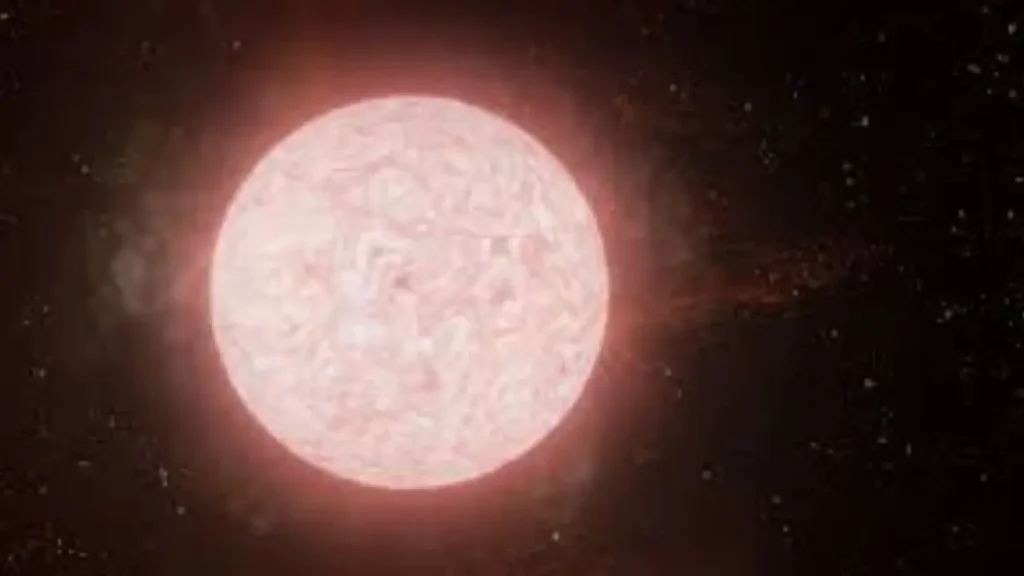Astronomers have discovered enormous starspots on the red giant star XX Trianguli, which is about 630 light-years away from Earth. These starspots are so large that their total surface area surpasses that of the Sun, making XX Trianguli the “most spotted star in the sky.”
Differential Rotation of Starspots
Unlike the Sun’s sunspots, which are periodic in their 11-year cycle, the starspots on XX Trianguli behave erratically. This erratic behavior points to a chaotic internal dynamo mechanism that is responsible for generating the star’s magnetic fields, thereby different from the periodic magnetic activity of the Sun.
Research Details
The study was led by researchers from the Leibniz Institute for Astrophysics Potsdam (AIP) and the HUN-REN Research Center for Astronomy and Earth Sciences (HUN-REN RCAES). Data from a span of 16 years was analyzed. Over 2,000 high-resolution spectra were obtained using the STELLA robotic telescope in Tenerife between 2006 and 2022. This dataset has allowed scientists to create 99 time-series images of how starspot activity changes over the star’s surface.
Chaotic Dynamo Mechanism Identified
The magnetic dynamo of the star is non-cyclic and chaotic, unlike the Sun, whose cycles are regular. The starspots are the cause of the brightness variations that occur as they rotate in and out of view every 24 days or so. This discovery shows the turbulent internal processes of XX Trianguli and provides a new perspective on stellar magnetic fields.
Effects on Star’s Position
It also was determined that these huge starspots greatly impact the star’s photocenter, or its center of light. The photocenter is displaced by as much as 10% of the radius of the star, equivalent to 24 micro-arcseconds. Although such a change may seem tiny, these positional displacements become observable over interstellar distances.
Scientific Significance
The observations provide valuable insights into stellar magnetic activity and internal dynamics. XX Trianguli’s chaotic and non-cyclic starspots challenge existing models of stellar magnetism and highlight the complexity of red giant stars.
Implications for Astronomy
Such important positions have XX Trianguli given as key candidates through understanding behavior of the spot of the star, coupled with its magnetic dynamo mechanism, to appreciate for longer studies needed by those responsible for studying stars that seem far away.
